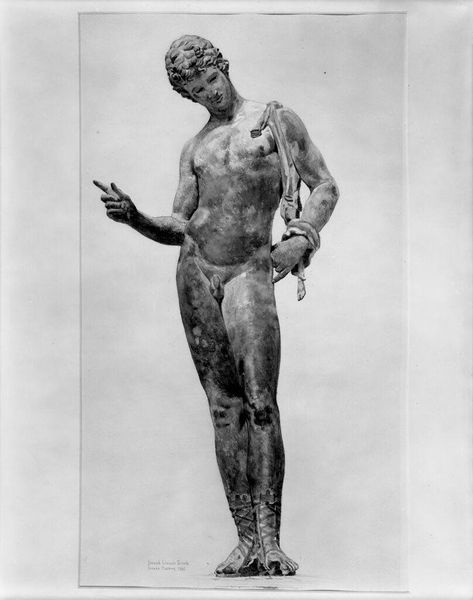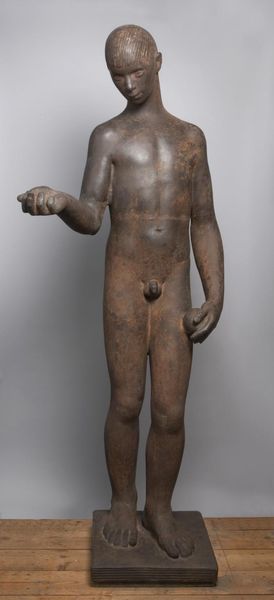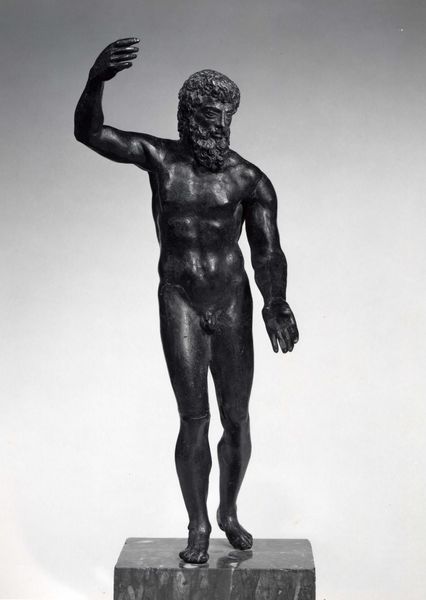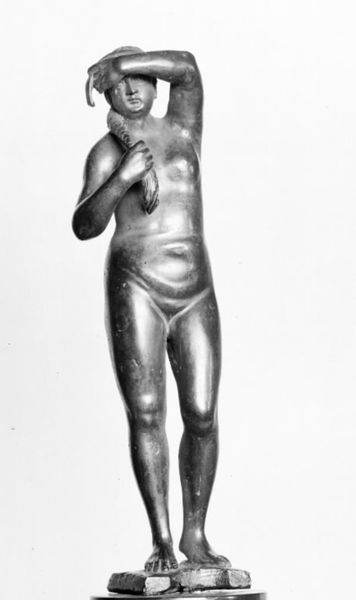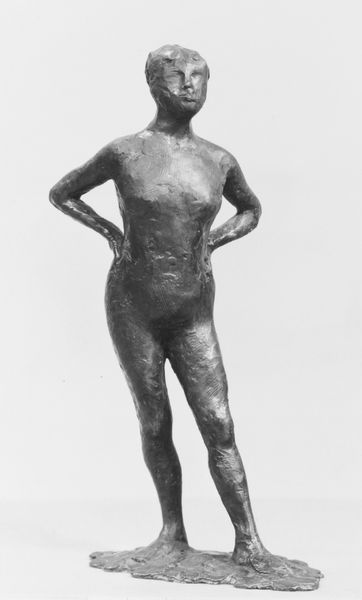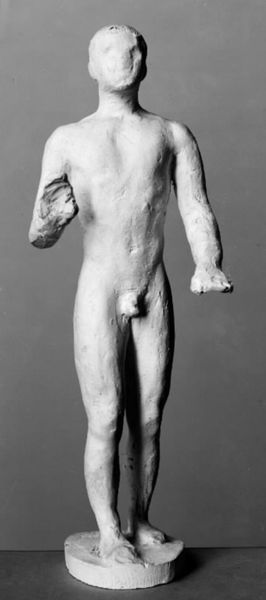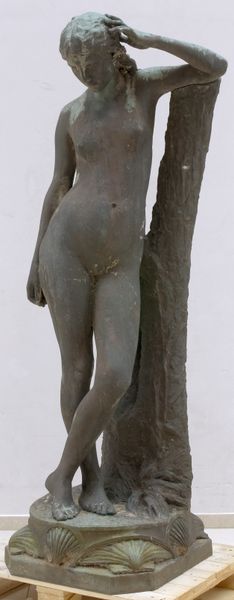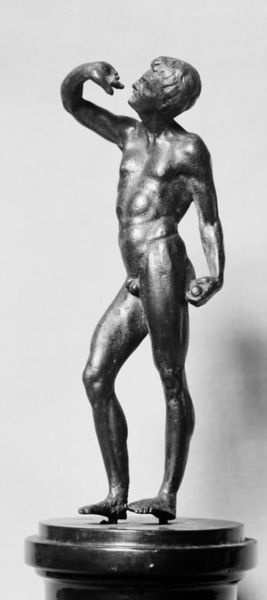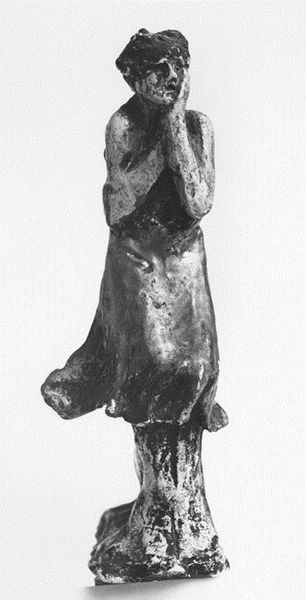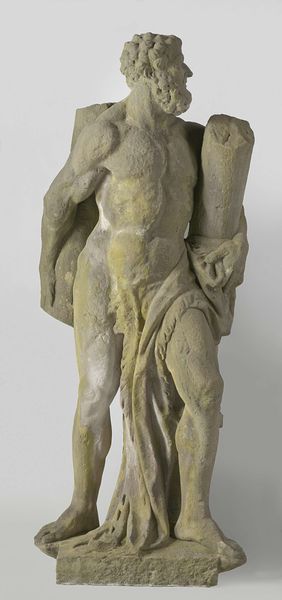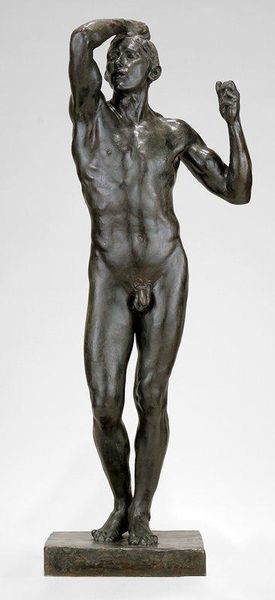
bronze, sculpture
#
portrait
#
statue
#
sculpture
#
classical-realism
#
bronze
#
sculptural image
#
sculpture
#
statue
Copyright: Public domain
Curator: Standing before us is Charles Despiau’s 1937 bronze sculpture, Apollon. Editor: My immediate thought is that while it presents itself with classical pretense, the roughly textured bronze gives a modern and somewhat somber cast to what one expects from idealized male figures. Curator: Despiau was known for his simplified yet powerfully expressive portraiture and figuration, connecting with ancient Greek sculpture while pushing against strict academic traditions. Notice the lack of ornate detail, yet how muscular and godlike the statue appears. In line with tradition, we do see how this nude figure evokes a timeless quality of the Apollonian ideal. Editor: Yes, but I’m also drawn to what it signifies regarding bronze-casting as a process, especially the way surface handling gives an indication of the sculptor’s touch and working methods. It highlights the very labor of creation and the specific material. Look at the tool marks, that very conscious rejection of slick, mass produced work of that period! Curator: Absolutely. There's a tangible feeling of both reverence for classical ideals and a willingness to work with them in light of contemporaneous stylistic inclinations. Apollo as a symbol represents light, reason, and the arts—and Despiau's interpretation appears to embrace a renewed engagement with humanist values prevalent during the interwar period. What the artist decides to obscure by a mere suggestion through abstraction also contributes heavily. Editor: And it is very much situated in the 1930's social landscape. The classical motif, as we know, can at any point be put into the service of diverse, even opposing, political agendas. A more nuanced understanding can derive from questioning how this “Apollon” functions amidst discourses of nationalism and changing social mores during this complex period. Bronze, after all, became the primary medium for grand monuments precisely during that time! Curator: That’s quite astute. Perhaps seeing through it necessitates us viewing its inherent ambiguity – how symbols can undergo significant transmutation when deployed under various contexts. The genius lies in evoking memory, inciting associations, and forging something undeniably novel. Editor: Agreed. Examining this sculpture prompts critical engagement not only with classical form but also with labor history, cultural appropriation, and ideology. Curator: Precisely. Viewing Apollon is not just experiencing a visually stunning form, it invites reflections on ever-shifting human aspirations. Editor: The subtle dissonance makes you pause to consider, what meaning, or message does this form seek to relay in that particular moment in time?
Comments
No comments
Be the first to comment and join the conversation on the ultimate creative platform.

